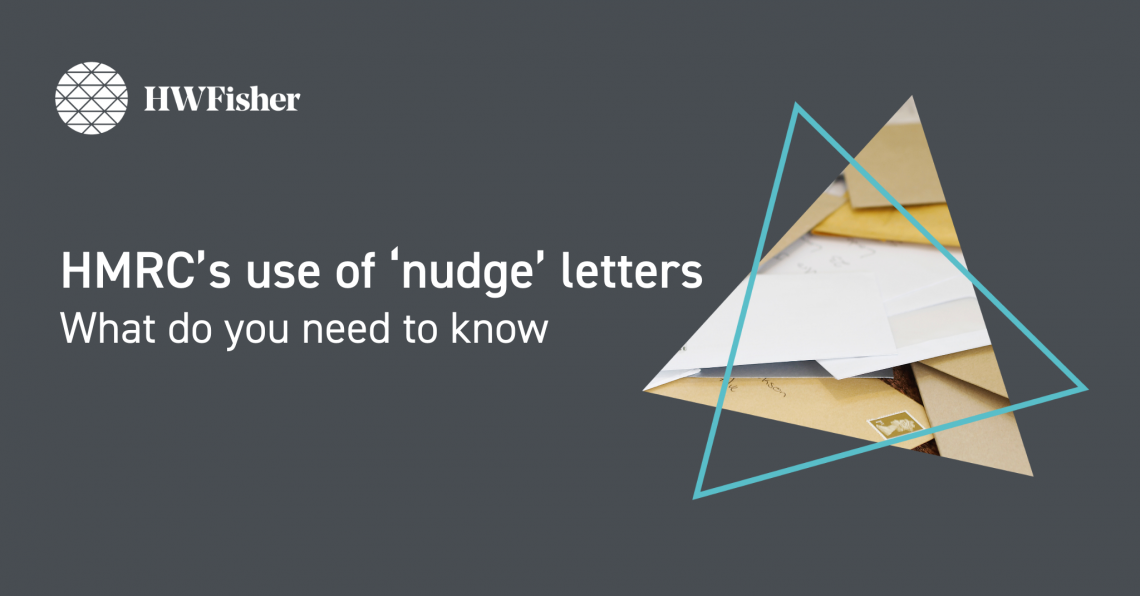
HMRC has begun issuing further batches of nudge letters to taxpayers. HMRC has used what has become known as ‘nudge’ letters since 2017 , designed to prompt a response from the recipient.
Following the introduction by the OECD of the Common Reporting Standard (“CRS”) in 2017 HMRC has received many millions of pieces of data under the CRS. The data relates to bank accounts held by UK resident individuals in offshore jurisdictions that have also signed-up to the CRS.
The data is normally, but not always, checked against a relevant individuals’ tax return before a nudge letter is sent. The use by HMRC of nudge letters is therefore a more cost-effective way to check the tax risk involved on the enormous volume of CRS data it receives. By approaching the matter of tax risk this way, it places the onus on the taxpayer to undertake the requisite review work instead of HMRC and to make any necessary disclosure as appropriate.
HMRC does not necessarily issue nudge letters to all taxpayers whose self-assessment returns they suspect may be wrong or not submitted at all. They could always opt instead to use their formal enquiry powers to look into a specific return or open a more serious tax investigation where fraudulent behaviour is suspected.
HMRC has used these letters not just to issue these to taxpayers who hold overseas bank accounts, but also to taxpayers who receive investment income, taxpayers who claim non- domicile status and residency status claimed under the statutory residence test (“SRT”).
More recently HMRC has issued nudge letters to taxpayers who it believes hold crypto assets, advising them that Capital Gains Tax issues can arise on any gains realised from the sale, or deemed disposal, of crypto assets which can include outright sales of crypto assets for cash, exchanging one type of crypto asset for another and using crypto assets to purchase goods or services.
If you or your clients receive a nudge letter, this does not necessarily mean a previously submitted tax return is incorrect and there may of course be a genuine explanation for the apparent discrepancy. However, it should be good practice to nevertheless undertake a thorough review of your own, or clients, tax affairs to determine if a disclosure to HMRC is required.
The letter asks recipients to complete a ‘certificate of tax position’. This includes a confirmation of understanding that a false certificate is a criminal offence and can result in an investigation or criminal prosecution. A word of caution here because this certificate applies to all tax years and for any size of mistake. In most cases therefore, it may be advisable to respond via an explanatory letter or, if a disclosure is needed, by approaching HMRC to initiate that process first. Different disclosure routes are available and advice should be sought on the most appropriate disclosure method depending on the client’s circumstances.
We’d love to hear from you. To book an appointment or to find out more about our services: